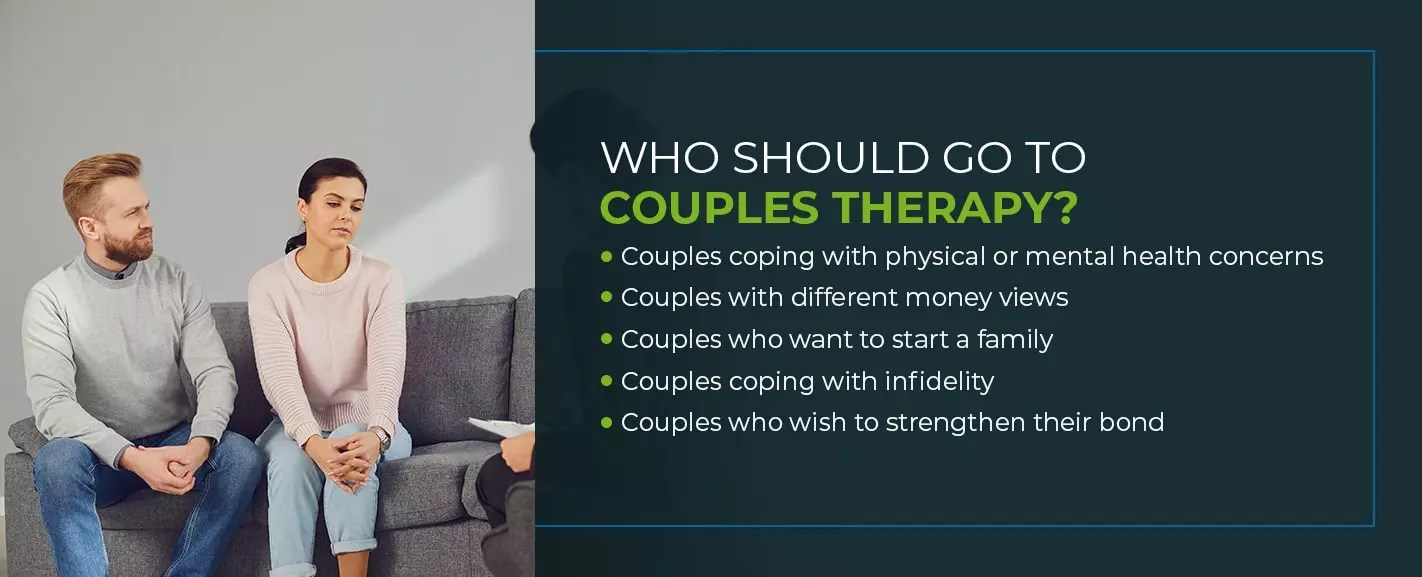Aim Point Counseling Fundamentals Explained
Table of Contents4 Simple Techniques For Aim Point CounselingFascination About Aim Point CounselingSome Of Aim Point CounselingSome Ideas on Aim Point Counseling You Need To KnowNot known Details About Aim Point Counseling The Basic Principles Of Aim Point Counseling
The longitudinal design involves a pre-treatment study and two follow-up studies at 3- and 12-months post-intervention. The study is established in eight Relationships Australia Victoria centres, across cosmopolitan, outer suburban areas, and regional/rural websites. Relationships Australia, a non-government organisation, is the biggest supplier of couple counselling and relationship solutions in Australia.
In Australia, the typical size of marriage before separation is 8.8 years, and around fifty percent of all divorces involve couples with children [1] These high rates of connection failure have actually been continually related to unfavorable wellness effects for both grownups and youngsters following divorce/separation. These include isolation from assistance networks, and decreased earnings and requirement of living for both adults and kids [3], issues of commitment over kids for males, and anxiety and loss of identity for ladies [4,5]
The Basic Principles Of Aim Point Counseling
The impacts of divorce and separation can be harmful, study suggests that high partnership disharmony in intact pairs is also most likely to have negative results.
Moreover, elements that influence the outcomes of these services need extensive examination. Research study to day has recognized both pair and individual aspects that might add to relationship dissonance. These consist of partnership complete satisfaction and commitment at the pair level, and anxiety at the private degree. Robust research to assess relationship-enhancing interventions in the neighborhood are limited.
The smart Trick of Aim Point Counseling That Nobody is Talking About
Connection fulfillment has been one of the most usual result variable determined in more than 200 analyses of pair counselling [11,12] Research studies have located considerable enhancements in partnership fulfillment from pre- to post-treatment [13,14] and over the program of one to 2 years complying with counselling [15] In these researches, partnership contentment was most often examined using the Dyadic Adjustment Scale (DAS) [16] While the majority of studies suggest enhancements in partnership fulfillment following couple therapy, they are restricted by the samples and procedures made use of, greatly short-term follow-up time structures, and evaluations that do not account for the dyadic nature of pair information., is an additional generally investigated relationship outcome.
To summarise, research indicates that couple-specific variables as well as individual factors may predict the outcomes of pair counselling and partnership solutions. The causal instructions of these partnerships, nevertheless, is less clear. These monitorings are necessary, since, to warrant and lead the application of partnership solutions such as couple therapy, empirical evidence should explore both the outcomes of relationship solutions and the variables that forecast successful treatment.
For that reason, there is a growing consensus that efficiency researches need to be enhanced by effectiveness study to best educate professional practice [ 29] The minimal performance study that exists to date recommends that pair counselling can boost results such as relationship satisfaction [33,43], interaction skills and basic well-being [44], a minimum of in some European countries.

We currently understand little regarding the accounts of pairs that look for out connection education and learning contrasted with those that look for partnership coaching, or the end results of these programs. Unscientific proof recommends that there might be significant distress amongst at least some pairs looking for partnership education.
Aim Point Counseling - Truths
Comments includes participants finishing sets of questions about their connection (e.g. actions of interpersonal troubles), and getting info on what their scores show. Cognitive-behavioural techniques promote changing cognitions to assist in positive partnerships. These may include advertising sensible attributions/expectations around negative companion behavior [46] In skills training, pairs go to talks or presentations on partnership skills, and practise these throughout facilitator-led tasks [ 45]
These impacts have actually persisted for as much as 4 years in some researches [47] Nevertheless, these meta-analyses highlight constraints in the existing literature on partnership education. Specifically, the bulk of studies involved pairs from upper socio-economic backgrounds that were not experiencing high relationship disharmony [47,48] This example account might not represent clients that commonly present for connection education.
Excitement About Aim Point Counseling

Really little research study has examined the relative benefits of pair coaching and connection education programs. As clients are most likely to self-select into these service types, it is unclear whether characteristic relationship distress accounts present to each solution type, or without a doubt whether there is a communication between offering profile, solution kind and result.
(https://www.behance.net/toddrashid)
Hence, we have actually included a 12-month follow-up to determine longer-term fads and impacts.
Therefore, we suggest to utilise multi-level analytical modelling treatments that manage for the inter-dependence of couple information to examine any therapy impacts. The particular aims of the ECC research study are to: 1. Map accounts of clients looking for community agency-based pair counselling vs. connection enhancement programs in regards to socio-demographic and connection indications (such as relationship contentment, connection dedication, interpersonal problems, and reasons for participating in), as well as wellness (such as clinical depression, general well-being) and health and wellness solution use (eg.
2. Figure out whether pair therapy and partnership education services enhance 3- and twelve-month outcomes for connection satisfaction, commitment, and anxiety, making use of analytical evaluations ideal to couple data. 3. Figure out the loved more info here one contributions of client factors (private and couple) and therapy/education variables to outcomes at 3- and 12-months, and to sustainability of outcomes in time.
Getting My Aim Point Counseling To Work
Multi-level modelling to determine pre-post distinctions, controlling for dyadic (pair) level. To add to the literary works examining the effectiveness of community-based couple coaching.